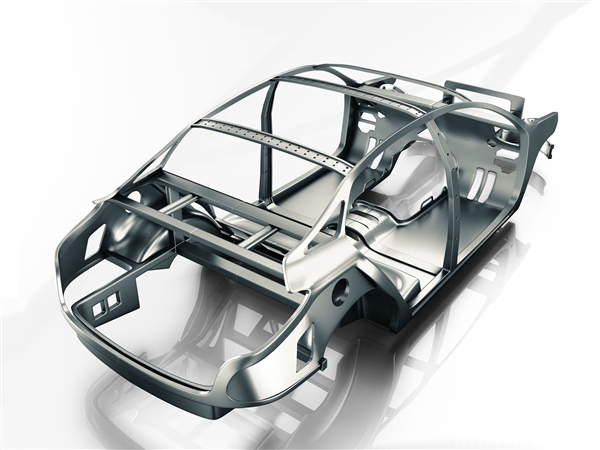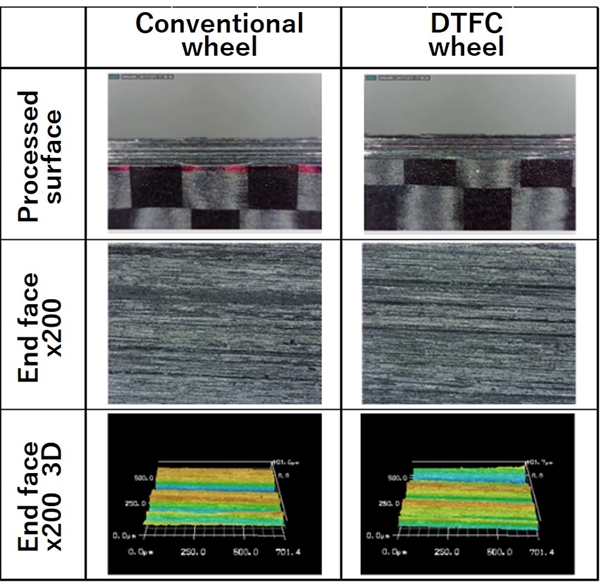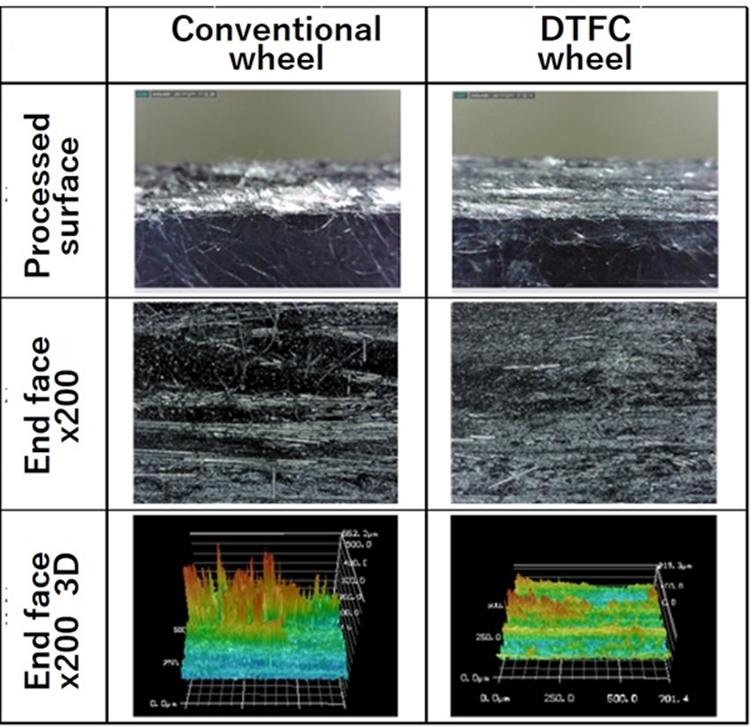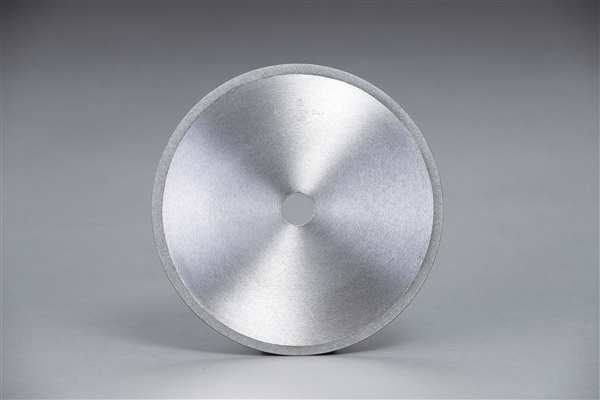Suppression of burrs and delamination during trimming and cutting of CFRP & GFRP
[Issues of burrs and delamination of fiber-reinforced materials]
Fiber-reinforced materials such as CFRP and GFRP are "light and strong (high strength to material ratio)." They are increasingly being used in aircraft and automobile parts, but in their machining, the occurrence of burrs (fiber residue) and delamination is an issue.
It can be inferred that these phenomena, where fibers are torn off on a large or small scale, are caused by the large "frictional force associated with uncutting" acting on the material side, which leads to delamination and tearing at the interface between the tool and the material, thus damaging the material.
[Solution with DTFC electroplated wheel]
By selecting the abrasive grains that maximize sharpness, minimizing the frictional area in contact with the work material, and maximizing the shearing action, our grinding tool DTFC for CFRP/GFRP processing can reduce the frictional area of direct contact, while effectively cutting away the elastic recovery area through shearing (displacement), thereby reducing burrs and delamination during trimming and cutting.
CFRP trimming process with less burrs and delamination

GFRP trimming with less burrs and delamination

Optimal grinding tools for machining fiber-reinforced materials
“DTFC” cutting wheel/mounted wheel for fiber-reinforced composite materials

* The left photograph shows a cutting wheel, but the tools used in the above trimming process are mounted wheels.
[Example of product specifications]
Bond : Electroplated
Grain size : #40 - #200
[Applied materials]
CFRP, GFRP, fiber-reinforced materials, etc.
■Significantly suppresses burr and peel ply (delamination) and realizes high-quality and high-precision machining.
■Reduces mass production cost by removing manual finishing process, realizing long product life, and reusing by re-electroplate.
■Reduction of manual finishing process can suppress precision variation and is effective for finishing junctions which require high precision.

